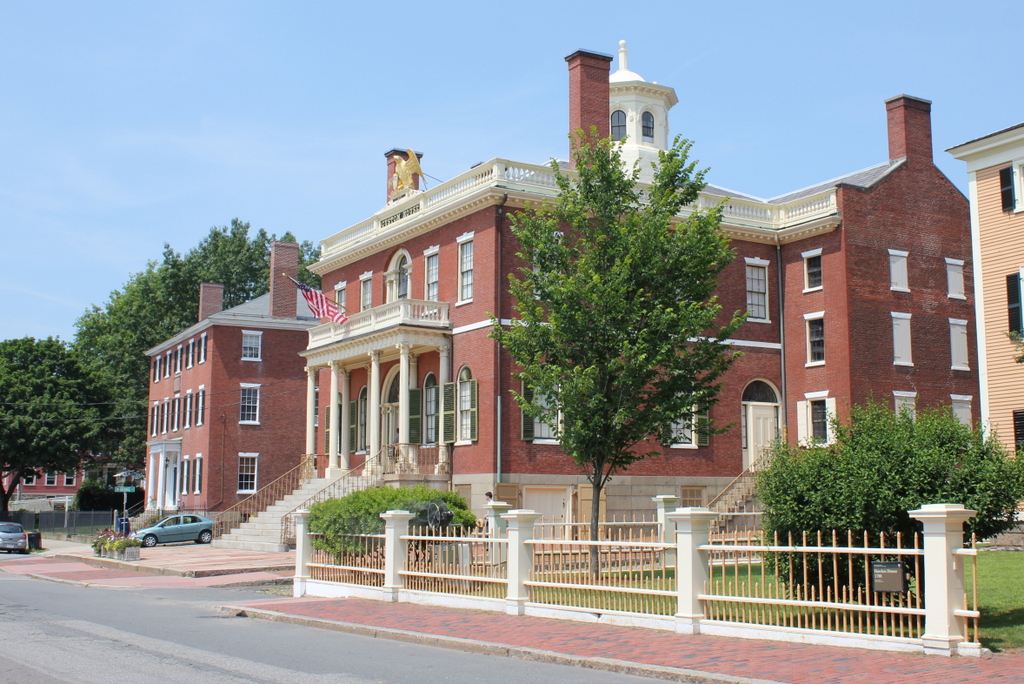The Custom House in Salem, probably sometime around the 1890s. Image courtesy of the Phillips Library at the Peabody Essex Museum, Frank Cousins Glass Plate Negatives Collection.
The scene in 2019:
As explained in more detail in an earlier post, the Custom House is an important landmark in Salem, dating back to its heyday as a major seaport. It was built in 1819, and it was located directly across from Derby Wharf, the largest of Salem’s wharves. It was here that customs officials collected import duties on cargoes, which provided the vast majority of revenue for the federal government in the years before direct taxes such as income tax.
Although the Custom House played an important role in the maritime history of Salem, it is probably best remembered for its association with Nathaniel Hawthorne, who worked here from 1846 to 1849 as Surveyor of the Port of Salem. He obtained this appointment through his connections within the Democratic Party, and it provided him with some financial security at a time when he was still trying to establish himself as a writer. However, he did not particularly enjoy the work, and he ultimately lost the job after the Whig Party won the presidency in 1848 and dismissed Democratic officeholders such as Hawthorne.
Embittered by this experience, Hawthorne wrote a lengthy diatribe against Salem in general and the Custom House in particular, and he included it as the preface to his 1850 novel The Scarlet Letter. Although most of the novel is set in 17th century Boston, the Salem Custom House is the place where the fictional 19th century narrator of the story discovers the physical scarlet letter.
By Hawthorne’s time, Salem’s shipping industry was in decline. It had never fully recovered from early 19th century embargoes and the War of 1812, and by the middle of the century most of the international trade in the region had shifted to Boston. The Custom House would remain in use throughout this time, although the number of officials stationed here steadily dwindled.
In the long run, one of the positive side effects of Salem’s stagnant economy was that the early 19th century waterfront development remained largely intact. By the time the first photo was taken around the 1890s, this scene had not changed much since before Hawthorne’s time. The Custom House was still here, and beyond it was the Home for Aged Women, which had been built around 1810 as the home of Benjamin Crowninshield. Further in the distance was the Simon Forrester House, which had been built around 1790 at the corner of Derby and Hodges Streets.
Today, more than 120 years after the first photo was taken, this scene has still remained largely unchanged. All three of the buildings are still standing, although the Forrester House is hidden from view from this angle. The Custom House remained in use for its original purpose until 1913, when all of the customs districts in Massachusetts were consolidated into a single district based out of Boston. However, it was still used as offices for the Customs Service until 1936, and it was subsequently transferred to the National Park Service. Two years later, it became the centerpiece of the newly-created Salem Maritime National Historic Site. This was the first National Historic Site in the country, and it is comprised of a number of historic buildings here along the waterfront, including the Custom House.



Yes ia agreed